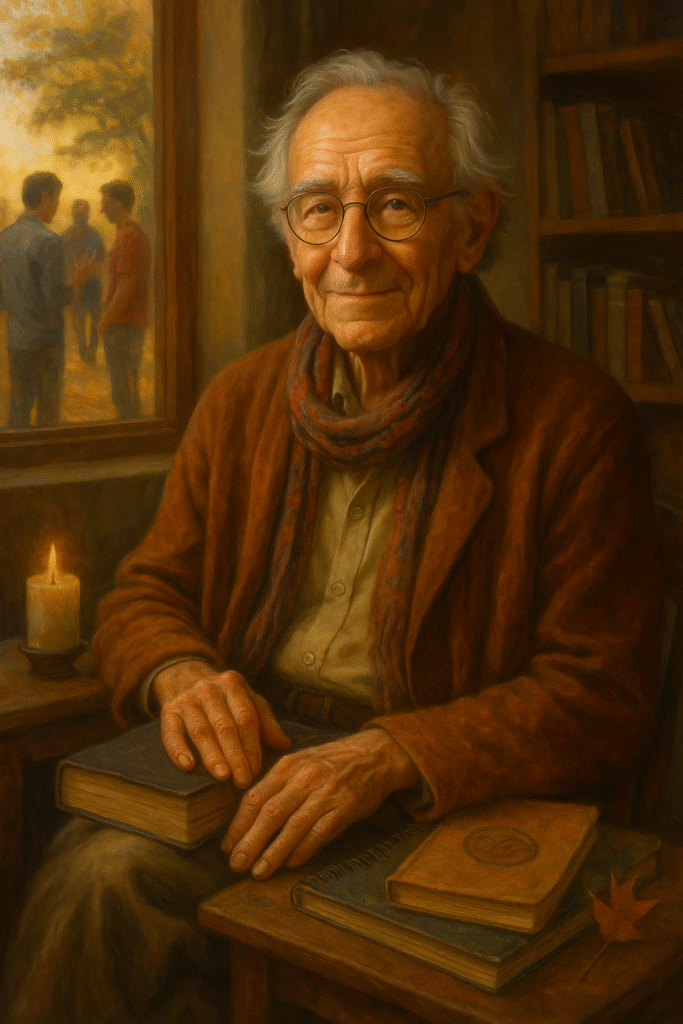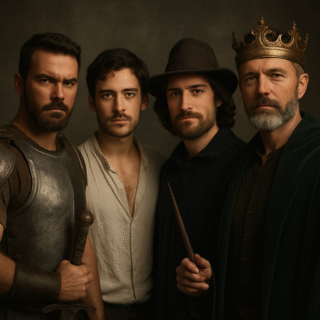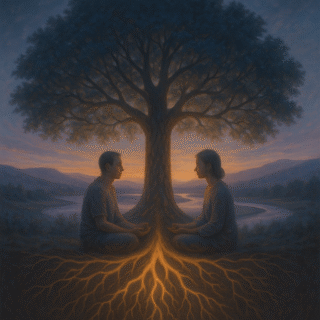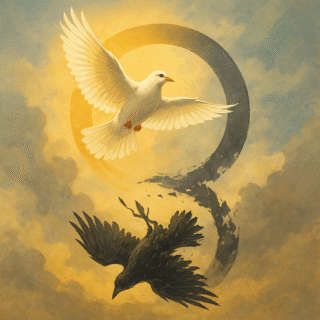EMBRACING THE INGREDIENTS OF SOUL WORK
In my previous post, How to Care for the Gay Soul, I explored the four masculine archetypes described by Robert Moore: Warrior, Lover, Magician, and King. Moore believed these archetypes were universal to all men—offering symbolic guidance on the path to masculine maturity. And in my own journey, these patterns have helped illuminate the terrain of psychological healing and spiritual growth.
But there’s more to the story. Gay men, and by extension lesbians, bisexuals, and other queer people, often walk a path that diverges from the heteronormative template. And in that divergence, different archetypes emerge, or the universal ones are refracted through a different prism. Many gay writers, especially those working from a Jungian, mythopoetic, or archetypal lens, have identified patterns of special relevance to gay lives.
Among them is Christian de la Huerta, author of Coming Out Spiritually, who has done profound work mapping the roles that queer people have played in spiritual history—as Gatekeepers, Shamans, Healers, Visionaries, and more. Writers like Mitch Walker, Andrew Ramer, and Harry Hay have also given voice to an archetypal gay consciousness rooted in transcendence and immanence, wounding and beauty, subversion and integration.
Here are six archetypes that I believe are especially useful for gay men to contemplate:

The Outcast
The Outcast is the archetype of the one who has been rejected, exiled, or marginalized. For many gay men, this archetype is not just symbolic—it’s lived. We have been cast out of families, faith communities, and cultural narratives. But the Outcast also bears secret power: he sees from the edges, witnesses what others miss, and knows the terrain of loneliness and self-reliance. In spiritual work, embracing the Outcast means healing shame and reclaiming our place in the human story—not through assimilation, but through authenticity. The Outcast often becomes the Prophet.
The Keeper of Beauty
This archetype honors the deep connection many gay men have to aesthetics, sensuality, and harmony. It’s not a stereotype—it’s a soul function. The Keeper of Beauty cultivates and protects what is elegant, expressive, and sacred in form. Whether through art, design, fashion, interior spaces, or simply the care of the body and spirit, this archetype brings a devotional quality to life. He reminds us that beauty is not luxury—it’s nourishment for the soul. In spiritual integration, the Keeper of Beauty grounds us in the felt sense of divinity made manifest.
The Sacred Androgyne
The Sacred Androgyne is an ancient and powerful symbol—appearing in myths from Shiva Ardhanarishvara to Hermaphroditus to angelic beings. For gay men, this archetype may reflect the inner blending of masculine and feminine, the refusal to be defined by polarity, and the freedom to embody contradiction. The Sacred Androgyne is not confused, but whole. They remind us that gender is a dance, not a cage. To work with this archetype is to heal the inner split, to see the sacred in both softness and strength, and to know that integration doesn’t mean sameness—it means harmony.
The Trickster
No archetype plays more freely with rules, norms, and identity than the Trickster. Found in myths as Loki, Hermes, or Coyote, the Trickster is clever, erotic, and untamed. For many gay men, especially those who lived outside societal expectations, the Trickster is a survival figure—the one who mocks the powerful, slips between categories, and finds freedom in transgression. But the Trickster is also sacred: he opens space for transformation. He teaches us to laugh, to seduce, to challenge what has become rigid. Spiritual integration isn’t always solemn. Sometimes it begins with a wink and a disruption.
The Caregiver
The Caregiver archetype expresses the compassionate, nurturing side of the gay soul—one that has often been overlooked in favor of more glamorous or rebellious roles. This archetype shows up in men who tend to the sick during the AIDS crisis, care for aging parents, create chosen families, or provide emotional support in queer communities. He reminds us that care is sacred, and that gentle constancy is a form of spiritual power. The Caregiver is the beating heart of the soul’s capacity to hold others with grace.
The Visionary
The Visionary sees into the future—or into the hidden structures of the now. Many gay men, precisely because they have lived on the edge of dominant narratives, develop a kind of clairvoyance of culture. They can perceive patterns, create possibilities, imagine new ways of being. The Visionary is not just a dreamer; he is a seer and builder of worlds not yet born. In spiritual life, this archetype helps us to align our creativity with service, and to trust that the visions we receive are invitations, not illusions.
Archetypes and Soul Work in the Unitive Way
In the Unitive Way, archetypes are spiritual tools—not dogmas or definitions, but living symbols. They are part of the soul’s own vocabulary. Gay men and lesbians are encouraged to listen deeply to the inner voices of their soul and to name those voices with the help of relevant archetypes. For gay men, some of these archetypes may feel deeply masculine, while others may be feminine, androgynous, or even nonhuman in nature.
Engaging with archetypes can be transformative—especially through retreats, workshops, ritual, journaling, or sessions with a spiritual director or depth-oriented therapist. Ultimately, it’s the King and Queen archetypes—symbols of sovereignty, wholeness, and responsibility—that oversee this sacred inner task. They ask us: How will you govern your inner realm? With what justice, what compassion, what truth?

Beyond Archetypes: Harry Hay and the Homophile Archetype
Of course, archetypes are only one method of spiritual integration. The deeper journey of soul work—especially for gay men and women—goes beyond any symbolic map. One of the most profound and original voices in this deeper work is Harry Hay, the visionary founder of the Radical Faeries.
Hay proposed that gay people relate to each other not in a dominant-submissive or objectifying dynamic, but as subject to subject: a relationship of mutual presence and sacred recognition. This was not just political—it was spiritual. He believed gay men were uniquely suited to mirror the divine in one another, without collapsing into traditional power roles.
My own vision, expressed through the Unitive Way, aligns deeply with Hay’s intuition, but takes it further into the terrain of nonduality and spiritual practice. Where Hay spoke of subject:subject, I speak of self-immanence—the idea that the soul, and indeed the Divine, is found within us as us, not separate or hidden in some far-off heaven. This brings us to what I call the Archetype of the Homophile.
The Homophile is not merely a man who loves men; he is a soul drawn to the mystery of presence, to spiritual intimacy, and to the experience of truth mirrored in love. This archetype is subtle—it may seem abstract at first—but it becomes essential in advanced soul work, where the task is not simply to express egoic identity but to integrate body, mind, soul, and spirit into a whole life of loving presence as Spirit.
Begin Listening to Your Soul
- Which archetypes speak to you?
- Which inner voices have been suppressed, and which are waiting to be heard?
- Who is the inner Homophile? Who is the inner Heterophile?
The Unitive Way invites you to begin that dialogue—not with theory alone, but with the listening ear of the soul. It already knows the way. All it asks is your attention.





